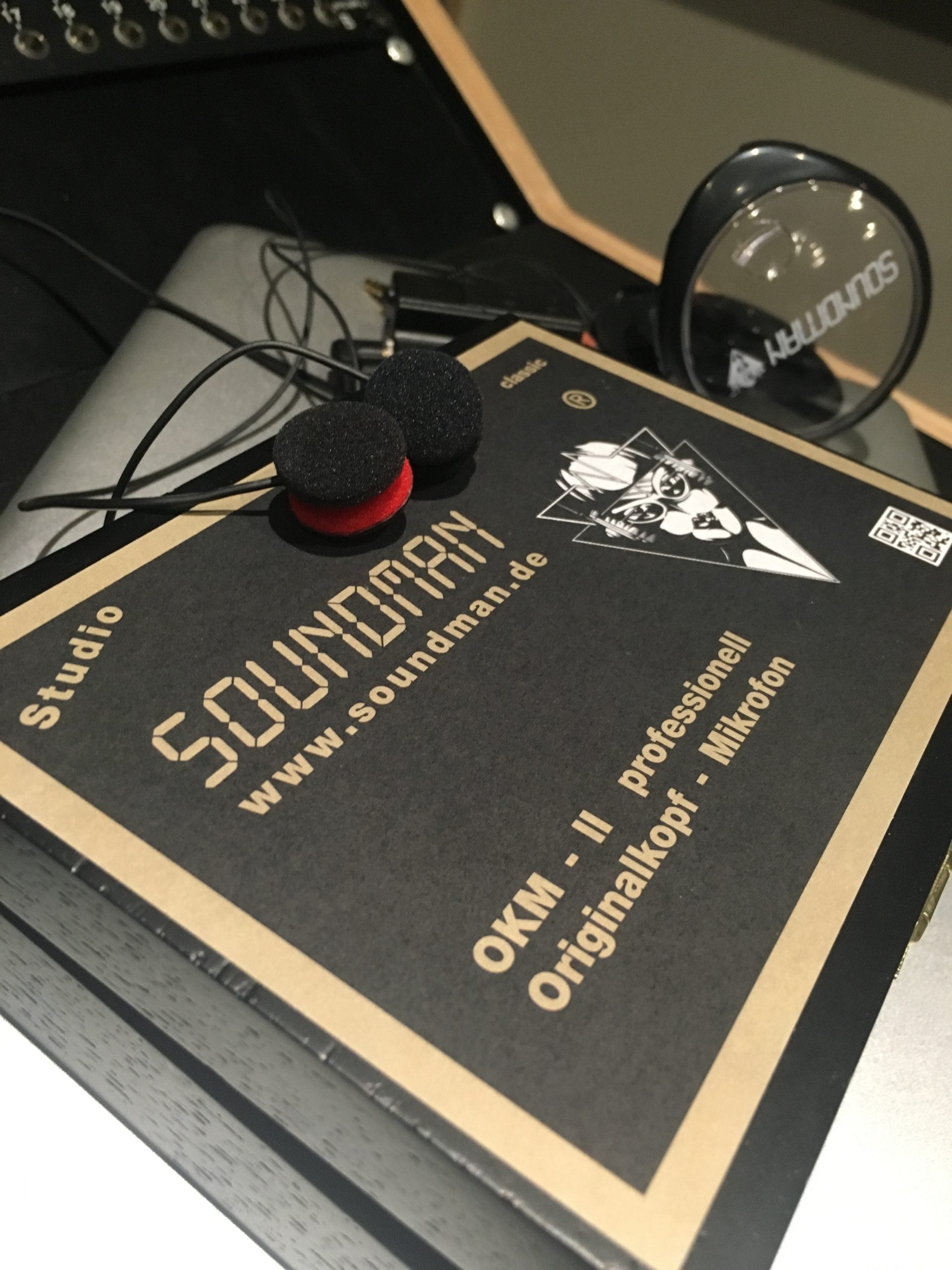Binaural simply means of, or relating to two ears. The technique attempts to replicate the phase, amplitude and spatial properties of sound that would be heard by a human auditory system.
This is done practically, using two tiny omnidirectional microphones. They are then placed on the ears, or in the ears if using a replica head. The recorded sound is then subjected to the same factors as the wearer’s ears typically experience. This includes effects such as the microsecond differences in sounds reaching the ear (forming our sense of direction on the X axis) the unique way the sound is funneled into the ear through the pinna and reflections and phase changes of sounds caused by the head.
The technique only works when played back through headphones (or a very special ambiphonic speaker system) This is because listening with headphones means that each ear listens to just one channel of audio, whereas with normal speakers both ears are listening to both of the speakers.
The idea is not a new one and the concept dates back as far as 1881, demonstrated by inventor Clement Ader. In front of a crowd on stage at the Paris Opera, Ader took pairs of microphones and sent signals to the left and right earpieces of listeners elsewhere in the city. Since then binaural has been thoroughly experimented with but has never been used in a mainstream technology.
The other way making a sound binaural is by using binaural emulation software. These softwares use Head Related Transfer Functions (HRTF) to allow the spatial positioning of a mono sound within a virtual sonic space. HFTFs are a set of mathematical functions that characterise how an ear receives a sound from a point in space. In other words it’s a computer-generated version of the same thing. The positive is that you can then use any sound and treat it binaurally. A drawback is however that the software rarely sounds as authentic as the real thing.
We also have experimented with a third technique – a kind of hybrid of the two, which I will speak more about later. Something we’ve named binaural resampling, which has had mixed results.
